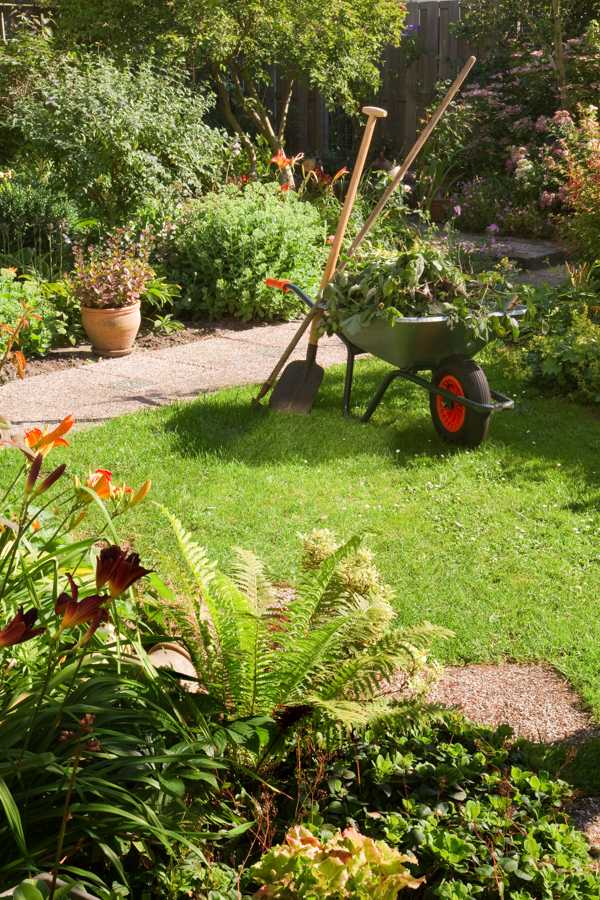Down and Dirty 4: Oops! Southern California Gardening Mistake #1

Down and Dirty Southern California Gardening
A weekly GardenZeus article series to help gardeners succeed in Southern California’s unique climates and growing conditions.
Post 4: Oops! Common Gardening Mistakes in Southern California #1: Testing Soil AFTER You Buy or Lease
Want answers to your gardening questions for Southern California? That just takes a quick internet search, right? Not so fast. The first website article that pops up may well lead you astray, or give information that’s partly helpful while missing the core information you need to succeed.
General and temperate-climate gardening advice, methods, and wisdom from popular gardening books and websites that lead to success throughout most of the United States often fall short or can even lead to homegrown gardening disasters in California.
Common Southern-California gardening mistake #1: Testing soil AFTER buying or leasing a new home
Why oh why oh why do gardeners not think ahead and test soil before committing their lives and resources to a yard or property? Moreover, why do gardeners struggle year after year, committing large quantities of time and money to fight the same problems and experience the same unsatisfactory results, in some cases eventually giving up entirely, without investing the few hours and the money necessary for quality soil-testing and understanding the results? Soil testing may be the best value of any money you ever spend on gardening.
This advice applies everywhere in the United States, but triply so in older urban and suburban areas of Southern California. Older properties, particularly those with buildings that date to before the 1970s, may have high lead concentrations in their soils from decades of leaded paints and other sources. Lead can be absorbed into the human body from eating vegetables, particularly leafy greens but also shoots, stems, and roots; eaten in the form of dust or dirt on plants and fruits/ or absorbed by breathing airborne soil particles while disturbing, working, or playing on soil. Why would you risk health problems for yourself or your family by gardening in soil when you don’t know the lead content?
Many other soil problems abound in Southern California: toxic levels of arsenic and copper and boron, low calcium, high levels of zinc or iron, high salinity, low organic matter, alkalinity that is through the roof. Think your 8.0 or 8.1 alkalinity isn’t a big issue? Think again. An alkalinity of 8.1 is 10 times as alkaline as 7.1. How many clients have I assisted who have discovered these and other serious soil problems long after escrow was closed on a property, or even after struggling with problems at a property for years or even decades? More than I would care to count.
Advice: Why check every faucet and light fixture during a house inspection but not test the soil in the beautiful sunny new yard where you hope to have a garden? Toxic or infertile soil could cost you hundreds of hours of time and thousands or tens of thousands of dollars on wasted gardening/landscape attempts and mitigation. Test soils and understand the results before committing to any property in Southern California. GardenZeus expert Darren Butler recommends using a lab and soil test that cover plant-available nutrients with metrics and analysis for critical nutrients, soil texture, organic matter, pH, salinity, and toxic metals.
Come on and do the Earthworm: Perhaps most importantly, come on and do the ultra low-tech earthworm dance before committing to any yard or garden plot: it’s easier than learning your ABCs. To test for earthworms: thoroughly wet an area of soil in a shaded area near plant or tree roots (but not close enough to harm the plant or sever major roots), or some other area that has been cultivated or appears reasonably fertile, using a slow trickle from a hose overnight or for several hours, then dig a hole about a foot in diameter or a foot on each side, and at least 10 to 14 inches deep. Remove the soil and sift through it with your fingers to check for earthworms. If you find few or no worms, it may be best to flee the property, or at least do further soil testing.
Many articles to follow in this special GardenZeus series will cover common vegetable-gardening mistakes in Southern California. Want more information about any given topic? See the complete list of articles at the link below and stay tuned if none cover your question or area of interest. Expert advice is often critically important to resolve the core gardening problems described in this article series. Individual circumstances vary and may require different approaches and methods for success. No single piece of advice will apply to all circumstances or everywhere within Southern California. Further articles in this series will revisit common problems and topics with additional detail.
“Down and Dirty Southern California Gardening” is a weekly GardenZeus article series in which expert Darren Butler shares more than 20 years of experience about what works and what doesn’t with gardening in Southern California:
Post 3: My Garden Crash-Landing in the San Fernando Valley
Post 5: What is the Mother of All Southern California Landscape and Garden Problems?
All articles in this series: Down and Dirty Southern California Gardening
GardenZeus Serious Gardening: Are You Eating Toxic Lead with Your Spinach and Leafy Greens?
GardenZeus Calfornia climate zones
Enter your California zip code for customized advice by plant